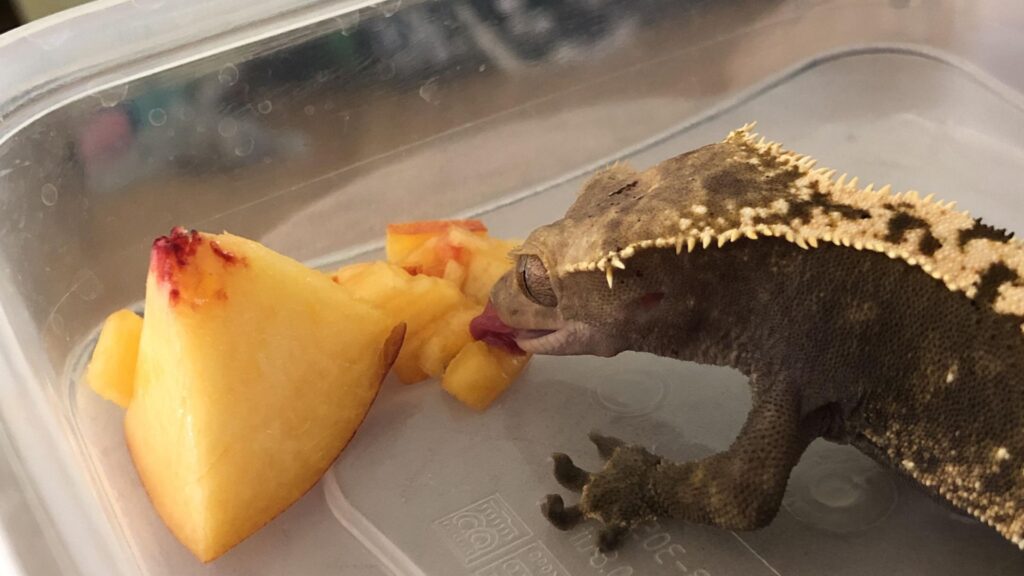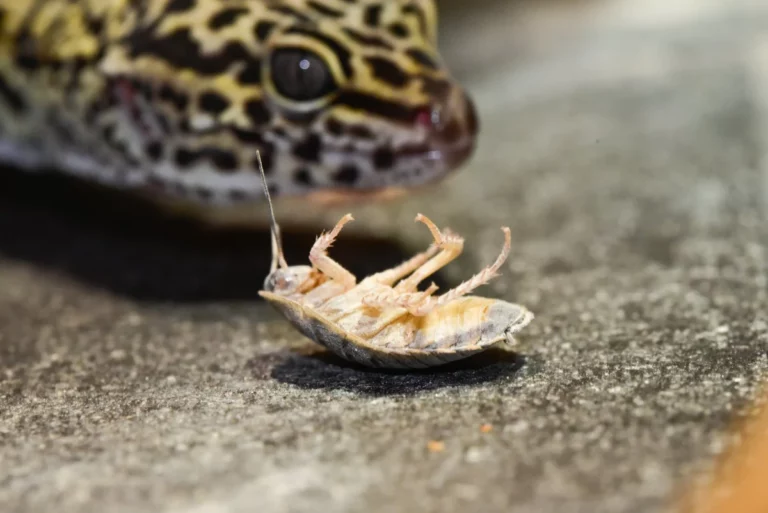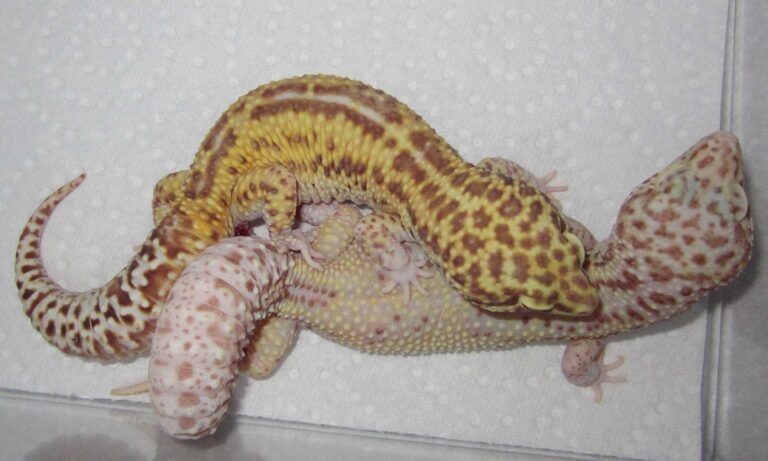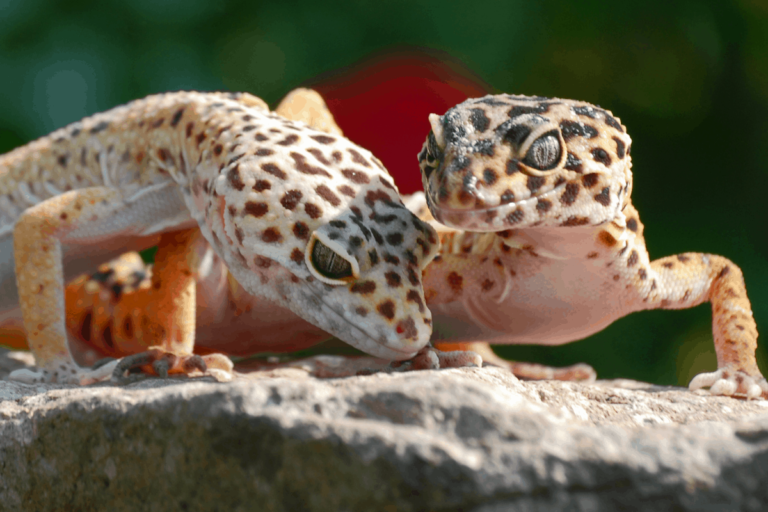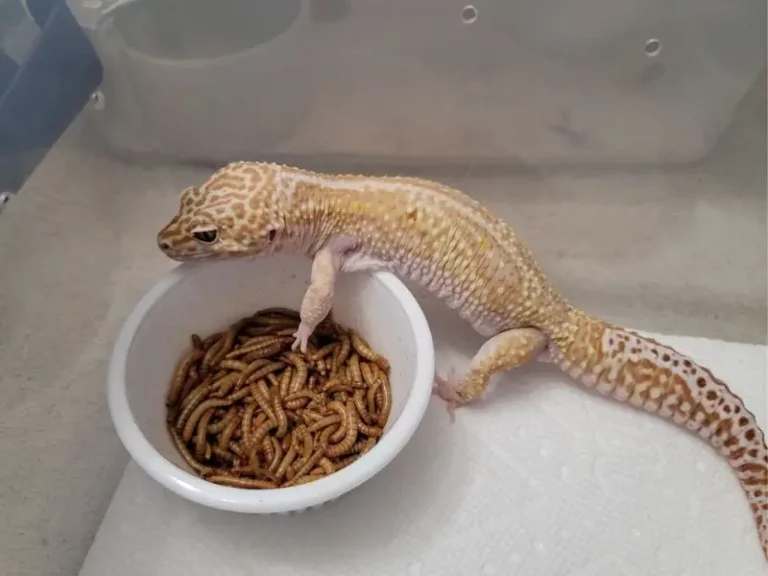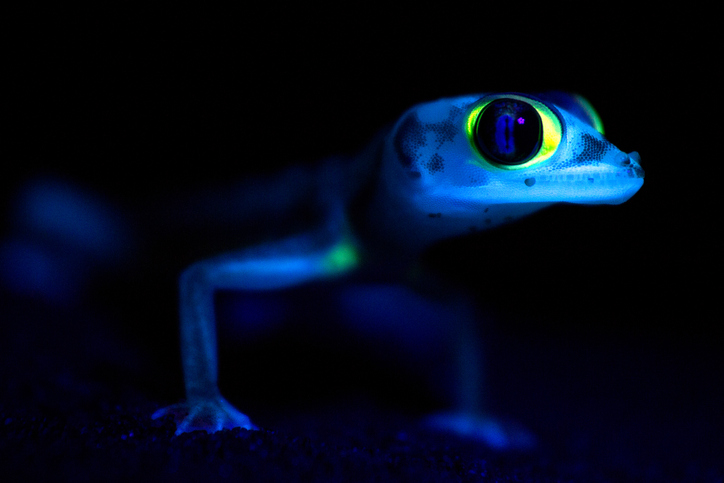Can Crested Geckos Eat Apples? Exploring a Tasty Twist for Your Pet
As I peered into the cozy terrarium, my curious crested gecko, Gizmo, blinked those mesmerizing eyes up at me, seemingly aware that it was snack time. As a responsible reptile enthusiast, I’m always on the lookout for new and exciting treats to enrich Gizmo’s diet. Today, our adventure takes a fruity turn as we dive into the intriguing question: “Can crested geckos eat apples?”
So, I found that the answer is YES,
They can have apples occasionally as a treat, but they should be mixed with other fruits for a balanced diet. Apples aren’t their favorite and also have a less ideal calcium-to-phosphorus ratio.
But before we embark on this apple-licious journey, let me introduce you to the fascinating world of crested geckos, these tiny tree-dwellers that hail from the lush forests of New Caledonia. Also, scientifically known as Correlophus ciliatus, have captured the hearts of reptile lovers worldwide with their striking appearance and delightful personalities.
Let’s start the journey
Nutrition Value of Apple:
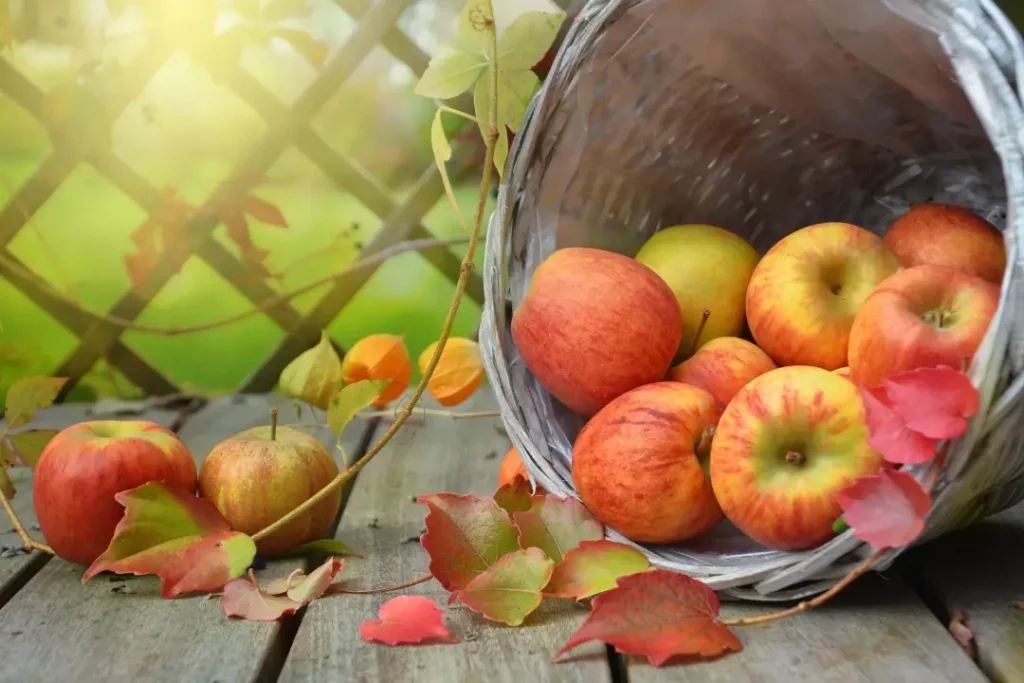
| Nutrient | Amount |
| Calories | 95 |
| Total Fat | 0.3 grams |
| Sodium | 2 milligrams |
| Total Carbohydrates | 25 grams |
| Dietary Fiber | 4 grams |
| Sugars | 19 grams |
| Protein | 0.5 grams |
| Vitamin C | 14% of the DV* |
| Vitamin A | 1% of the DV |
| Calcium | 6 mg |
| Iron | 1% of the DV |
| Potassium | 107 mg |
Understanding the Calcium-Phosphorus Balance:
Calcium is like a superhero mineral for crested geckos. It keeps their bones strong and helps their hearts, nerves, and blood work properly. But here’s the catch: they need to get enough calcium from their food, or their bodies will take it from their bones. Think of bones as their “savings account,” and they don’t want to make too many withdrawals.
Now, enter phosphorus, the calcium blocker. If there’s too much phosphorus, the body can’t use calcium effectively. So, finding the right balance between calcium and phosphorus in their diet is crucial.
In a perfect world, the ideal calcium-to-phosphorus ratio for geckos is 2:1. This means there should be twice as much calcium as phosphorus in their meals.
Let’s look at apples. They have 6 milligrams of calcium and 11 milligrams of phosphorus. On the surface, this might seem like a bad deal for geckos. Too much phosphorus and not enough calcium can lead to problems.
But wait, there’s a twist with apples. The total amount of calcium and phosphorus in them is quite low. So, if your gecko nibbles on a tiny piece of it now and then, it won’t wreak havoc on their calcium-phosphorus balance.
In simple terms, they aren’t the best, but they won’t harm your gecko in small amounts. So, it’s okay to offer them as an occasional treat.
Oxalic Acid in Apples:
Now, let’s talk about oxalic acid, a little troublemaker when it comes to calcium absorption. Unlike calcium and phosphorus, there’s no magic ratio for oxalic acid. In fact, the goal here is quite straightforward – keep oxalic acid as low as possible.
The good news is that apples are on our side in this battle. They’re exceptionally low in oxalate, with a mere 1 milligram per piece of fruit. This means that when it comes to oxalic acid, apples are among the good guys, causing no significant concerns for your crested gecko’s calcium metabolism.
Preparing and Offering Apples to Your Crested Gecko:
Feeding your crested gecko requires some special considerations since they don’t have strong jaws or teeth to chomp on their food. Their nimble tongues are the real heroes in this process. To ensure your crested gecko can comfortably enjoy apples, you’ll need to prepare them thoughtfully.
Let’s dive into the steps:
Preparation:
Wash the Apple: Start by giving the apple a thorough wash to remove any pesticides or bacteria. A fruit and vegetable wash can help break down chemicals, wax, and residue. Rub it under cold water and then pat it dry.
Peel and Core: Next, peel the apple, cut it in half, and then halve those sections again. Use a paring knife to remove the tough core from each piece. Be sure to check for any seeds and remove them.
Cooking (Optional): They are naturally crunchy and firm, which might pose a challenge for geckos. To make it easier to eat, consider cooking it. Place pieces and a small amount of water in a medium-sized pot.
Bring it to a boil, then lower the heat to a simmer. You don’t need to cook it for long – just until it’s tender. Allow it to cool before serving. For a smoother texture, use a potato masher or a hand-held blender.
Grating (Alternative): Another option is to grate it. This method creates a soft and mushy pulp that’s much easier to enjoy.
Benefits and Risks of Feeding Apples to Crested Geckos:
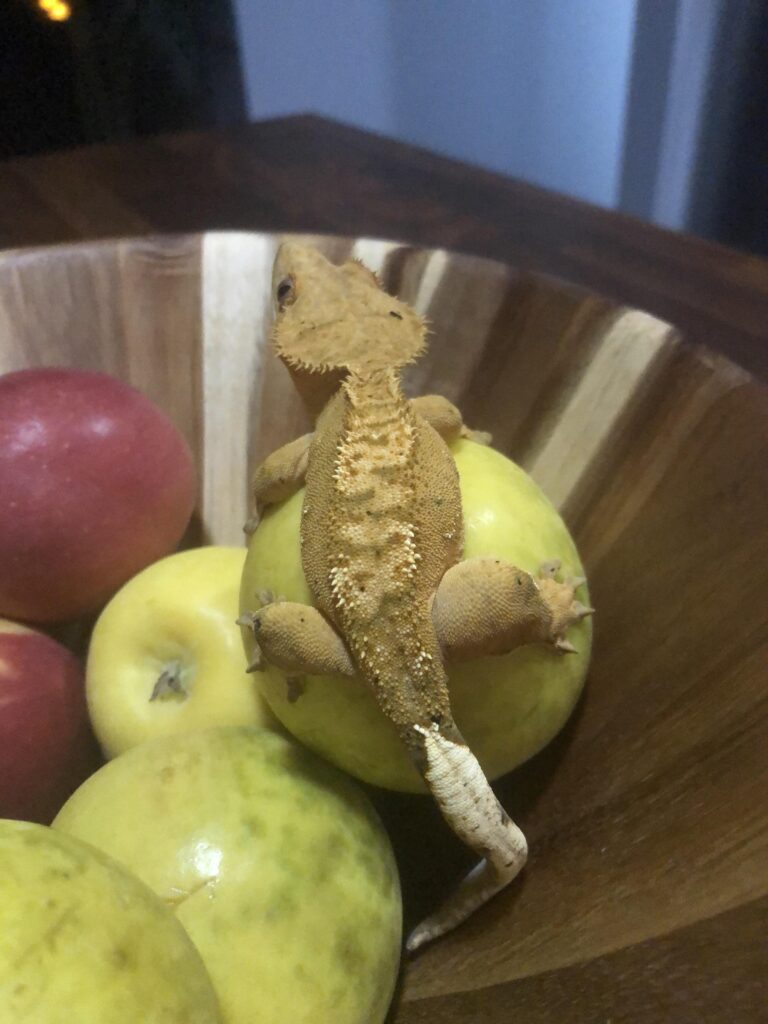
Benefits:
- Offering it as an occasional treat can add variety to your crested gecko’s diet, which is essential for their overall health and well-being.
- They have a high water content, which can help keep your gecko hydrated, especially if they’re not drinking water from a dish.
- Also, the natural sugars in apples provide a source of energy for your gecko, giving them a little boost.
Risks:
Feeding apples to crested geckos can have its drawbacks. They have an unfavorable calcium-to-phosphorus ratio, which, if consumed excessively, may lead to calcium deficiencies and metabolic bone disease.
Additionally, the natural sugars in them when overindulged, can contribute to obesity and other health problems. The skin and seeds of them can pose digestion and choking hazards, emphasizing the importance of proper preparation, including peeling and seed removal.
While they are generally low in oxalic acid, excessive consumption of high-oxalate foods alongside apples could interfere with calcium absorption. Finally, if not adequately prepared, the firm texture of apples may cause digestive discomfort for these delicate creatures.
FAQs
1. What Is the right portion size?
The portion size for a crested gecko is relative to its size. Use a 1/8 teaspoon, 1/4 teaspoon, or 1/2 teaspoon in comparison to the space between their eyes to determine an appropriate serving size.
2. How often serve apples?
Apples can be offered occasionally as a treat, but not as a primary food source. Limit apple treats to once or twice a week.
3. Should you serve apples with or without the skin?
It’s best to serve apples without the skin. The skin can be tough to digest for geckos.
4. Do all crested geckos like apples?
No, Not all crested geckos have the same taste preferences. While some may enjoy apples, others may not show much interest.
5. How long do they keep?
Apples can be kept fresh for several weeks when stored in a cool, dry place or in the refrigerator.
6. What is the best month to buy them?
Apples are typically in season during the fall months, making autumn the ideal time to find a wide variety of fresh apples.
7. What type of apples should I buy?
Opt for organic or pesticide-free apples whenever possible. Varieties like Gala, Fuji, or Granny Smith are generally safe choices for geckos.
8. Can I mix the apple with something else?
Yes, you can mix apples with other suitable fruits to create a fruit mash for added variety in your gecko’s diet, and also a few small insects( like crickets, and worms ) into their diet for added protein and variety. This combination can mimic the crested gecko’s natural diet in the wild. Just be sure the insects are appropriately sized for your gecko’s consumption.
Final Words
In conclusion, my exploration into whether crested geckos can indulge in apples has shed light on a delicate balance. While they can offer a touch of variety to their diet, it’s clear that caution is the name of the game. The calcium-phosphorus imbalance and potential risks associated with excess sugar intake remind me that moderation is key.
Further, proper preparation, including peeling and seed removal, is a non-negotiable step to ensure their safety. Though apples are relatively low in oxalic acid, it’s wise to be mindful of overall diet composition.
Lastly, the well-being of my buddies depends on their ability to comfortably digest their food, making the texture of apples a factor to consider.
As I reflect on this fruity journey, I’m reminded that, like any responsible keeper, it’s essential to prioritize their primary diet while offering apples as an occasional treat.
Ultimately, the health and happiness of my scaly companions are my top priorities, and that means making informed choices about their dietary adventures.

